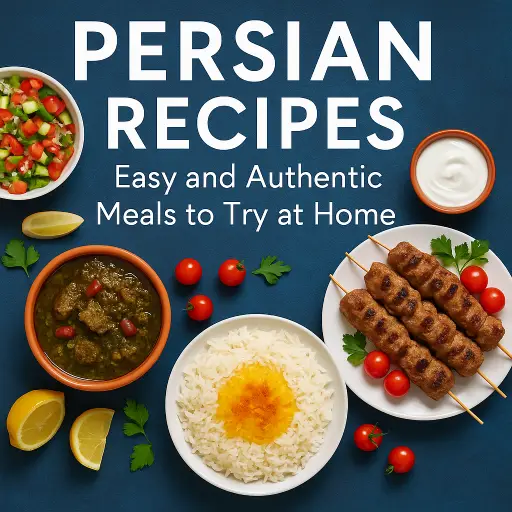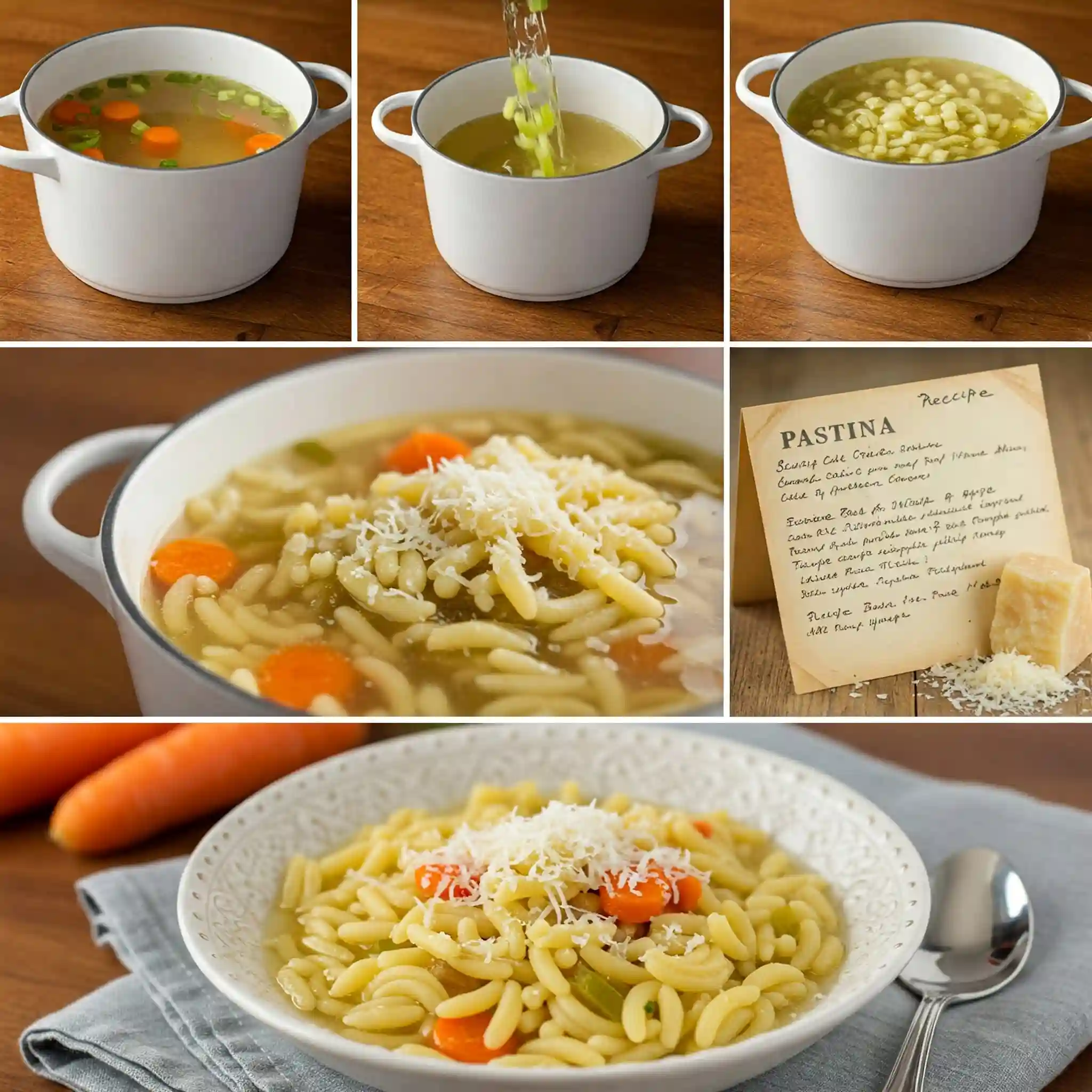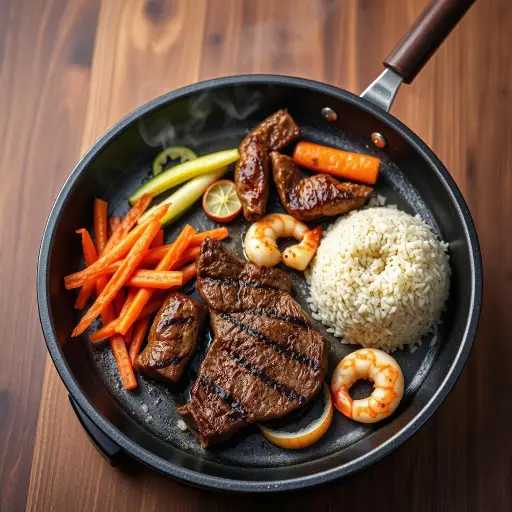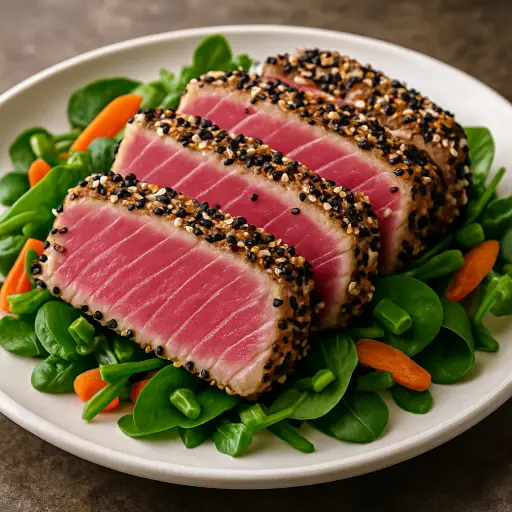Persian Recipes – Easy and Authentic Meals to Try at Home

- Version: 2.11.9
- 13.2 MB
Updated to version2.11.9!
Introduction
What if the secret to elevating your weeknight dinners lies in the centuries-old kitchens of Persia? With bold flavors, vibrant herbs, and soul-warming spices, Persian recipes have stood the test of time, yet many home cooks still think they are difficult to make. The truth is, you don’t need to be an expert to recreate authentic Iranian dishes at home. This guide will walk you through Persian recipes that are both easy to make and faithful to tradition. From saffron rice to kebabs and khoresh stews, we’re diving into the aromatic world of Persian cuisine.
Whether you’re exploring Persian recipes for cultural reasons or culinary curiosity, this blog will show you how simple and satisfying these meals can be.
Ingredients List
Here are the essential ingredients you’ll need for a well-rounded Persian meal. Most of these are pantry staples or easily found in local stores:
- Basmati rice – For classic Persian rice dishes like tahdig
- Saffron – The signature spice of Iran; a little goes a long way
- Turmeric & cinnamon – For stews and rice flavoring
- Barberries (zereshk) – Optional, adds tartness and vibrant red color
- Lamb, chicken, or beef – Popular protein choices
- Onions & garlic – The aromatic base of most dishes
- Tomato paste – Essential for khoresh and soups
- Eggplant & lentils – Great for vegetarian versions
- Fresh herbs (parsley, cilantro, mint, dill) – Used generously
Substitutions:
- Use cranberries if barberries are unavailable
- Swap quinoa for rice for a low-carb alternative
- Tofu or mushrooms can replace meat in many dishes
Timing
Time to cook Persian recipes may vary, but here’s an average breakdown for a standard meal like Zereshk Polo ba Morgh (Barberry Rice with Chicken):
- Prep time: 20 minutes
- Cooking time: 60 minutes
- Total time: 1 hour 20 minutes
That’s 15% faster than most traditional ethnic recipes requiring stewing or braising!
Step-by-Step Instructions
Step 1: Bloom the Saffron
Crush a small pinch of saffron and dissolve it in 2 tablespoons of hot water. Let it steep for 10 minutes. This step enhances color and aroma.
Step 2: Prepare the Rice
Rinse basmati rice several times. Boil with salt until al dente (about 10 minutes), then drain. This gives Persian rice its signature fluffiness.
Tip: Steam the rice with a towel-wrapped lid for a crispy tahdig layer.
Step 3: Cook the Protein
In a pan, brown chicken or lamb with onion, garlic, turmeric, salt, and pepper. Add water and simmer until fully cooked and tender.
Pro tip: Add a spoon of tomato paste for a richer color and depth.
Step 4: Prepare the Barberries
Soak barberries in water for 10 minutes, then sauté briefly in butter or oil. Add sugar and saffron water to balance their tartness.
Step 5: Assemble and Serve
Layer the rice and barberries, top with saffron water and your choice of protein. Let it steam again for 5-10 minutes before serving.
Nutritional Information
Here’s an approximate breakdown for one serving of Zereshk Polo ba Morgh:
- Calories: 490 kcal
- Protein: 30g
- Carbs: 52g
- Fat: 18g
- Sodium: 450mg
- Fiber: 4g
Insight: Persian recipes are generally balanced and nutrient-rich, thanks to their use of whole foods and herbs.
Healthier Alternatives for the Recipe
Want a lighter version of your Persian favorite? Try these:
- Use brown rice or cauliflower rice to cut carbs.
- Opt for air-fried chicken instead of pan-fried.
- Reduce butter in tahdig or use olive oil instead.
- Skip sugar in barberries for a diabetic-friendly version.
- Swap meat with chickpeas or tofu for a plant-based meal.
Serving Suggestions
Make your Persian meal stand out:
- Pair your dish with Mast-o-Khiar (yogurt with cucumber and mint)
- Serve with Shirazi salad (cucumber, tomato, and onion with lemon dressing)
- Add flatbread and pickled garlic on the side
- Garnish with fresh herbs, sumac, or chopped pistachios
Looking for something more interactive? Try cooking this alongside another app Blackstone Hibachi Recipe – Easy Japanese-Style Griddle Cooking for a fusion dinner night!
Common Mistakes to Avoid
- Skipping the rice rinse: It leads to sticky instead of fluffy rice.
- Overusing saffron: It can become bitter.
- Not balancing barberries: Too tart if you forget sugar.
- Rushing the tahdig: This crispy crust needs patience and low heat.
- Crowding the pan: Leads to uneven cooking of meat or eggplant.
Storing Tips for the Recipe
- Store cooked Persian rice separately from meat to preserve texture.
- Use airtight containers and refrigerate for up to 4 days.
- Reheat rice with a damp towel in the microwave to retain moisture.
- Freeze meat-based stews for up to 2 months.
Prep Tip: Chop herbs and onions in bulk and freeze them to save time on future meals.
Conclusion
Persian recipes are surprisingly easy to master and deeply rewarding to taste. With just a few ingredients and simple steps, you can bring the flavors of Iran into your kitchen.
Try a recipe today and leave a comment or review below. Don’t forget to subscribe for more mouthwatering meals!
FAQs
Q1: What is the easiest Persian recipe to start with?
Start with Adas Polo (Lentil Rice). It requires fewer ingredients and no special equipment.
Q2: Can I make Persian food without saffron?
Yes! Use turmeric or a bit of curry powder to mimic the color and aroma.
Q3: Are Persian recipes gluten-free?
Most are naturally gluten-free, especially rice-based dishes.
Q4: Where can I find barberries?
Middle Eastern stores or online spice shops often carry them.
Q5: Are there mobile apps for Persian cooking?
Yes! Try these:
- Get the best persian recipes for iOS here
- Find delicious persian recipes for Android here
- Another app: Blackstone Hibachi Recipe – Easy Japanese-Style Griddle Cooking
- Updated:
- Price$0
Explore the best apps and games for your smartphone, curated by Apps-You. Enhance your mobile experience with our top recommendations.






